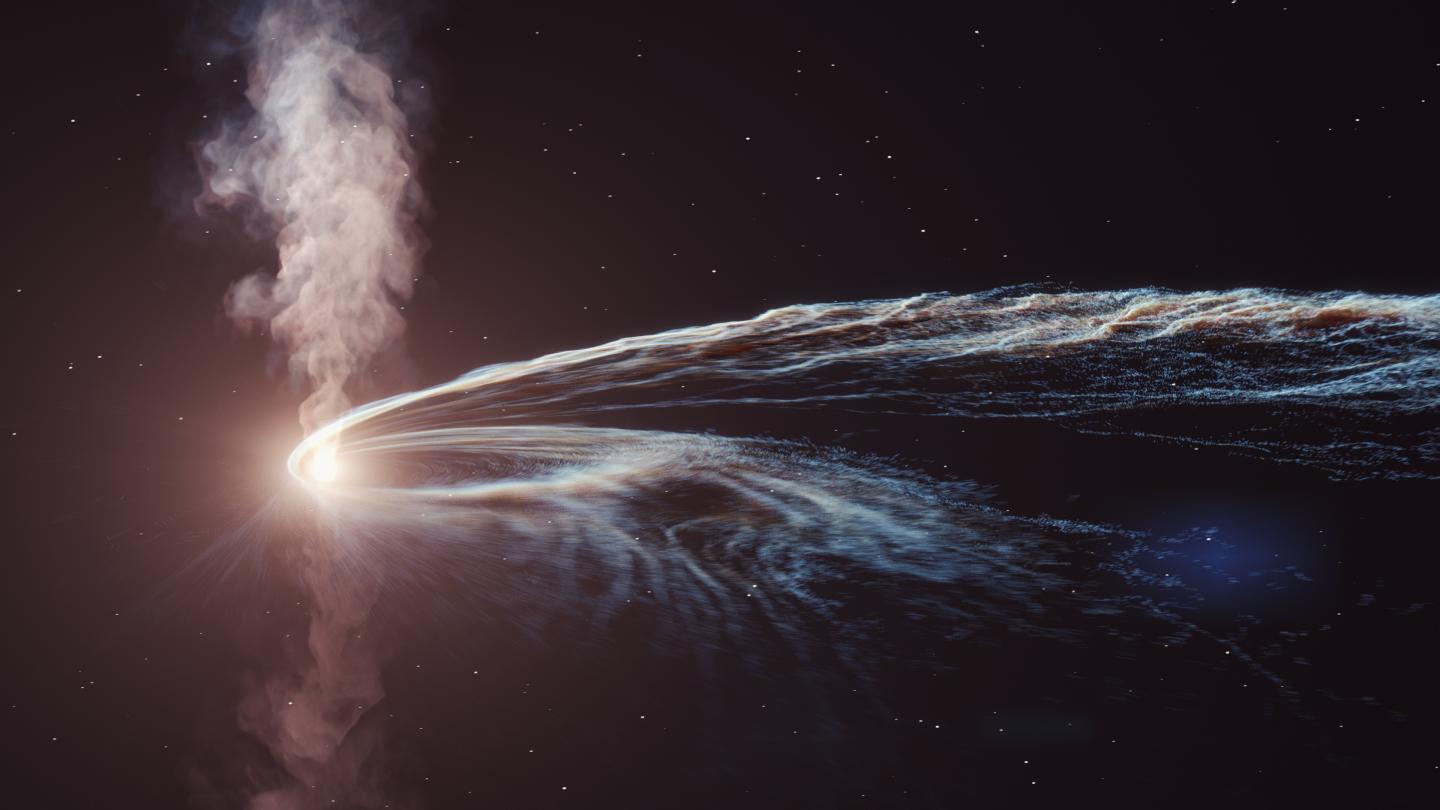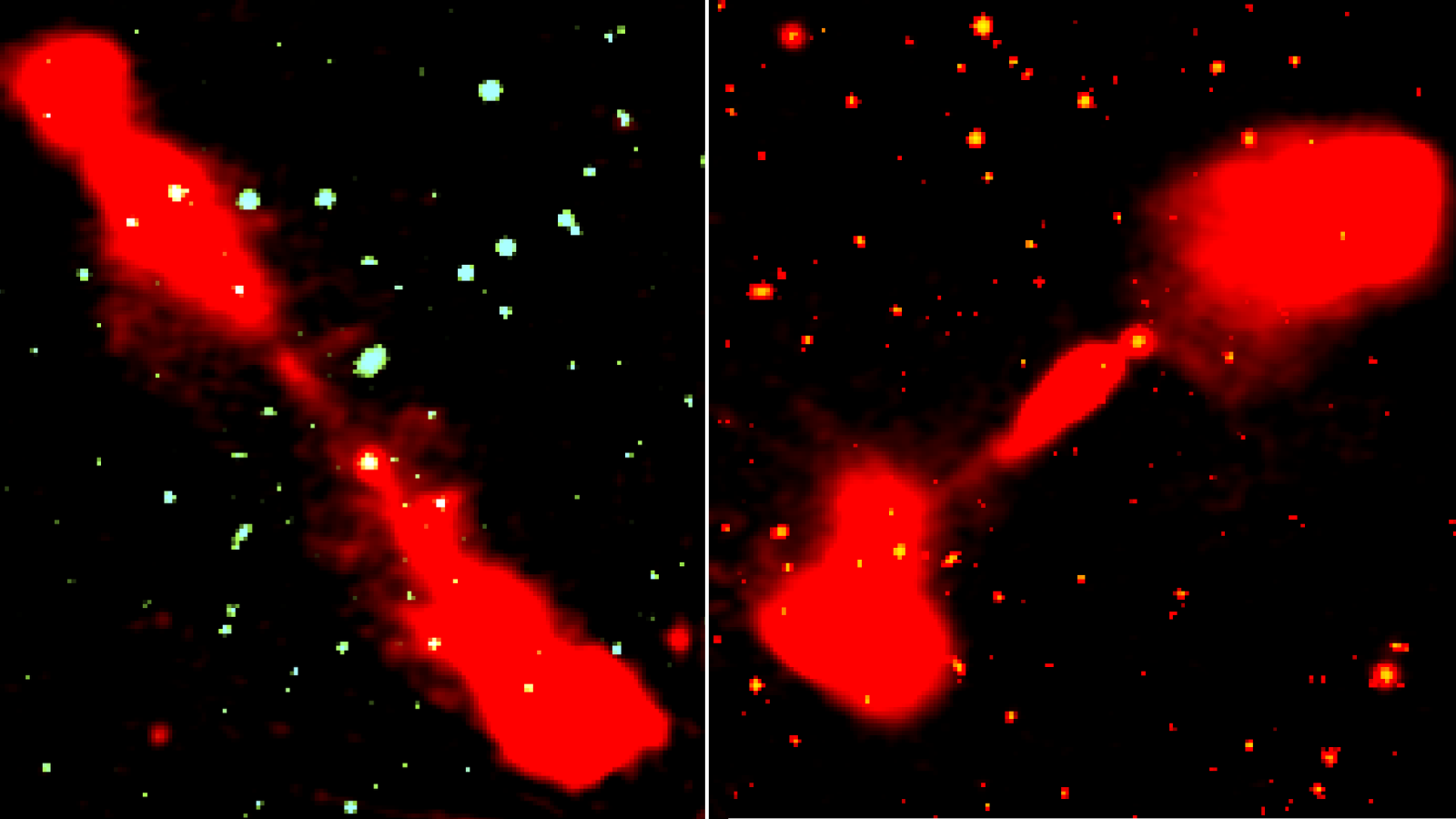'Ghostly' neutrino from star-shredding black hole reveals cosmic particle accelerator of epic proportions
A ghostly particle that smashed into Antarctica in 2019 has been traced back to a black hole tearing apart a star while acting like a giant cosmic particle accelerator, a new study finds.
Scientists investigated a kind of subatomic particle known as a neutrino, which is generated by nuclear reactions and the radioactive decay of unstable atoms. Neutrinos are extraordinarily lightweight — about 500,000 times lighter than the electron.
Neutrinos possess no electric charge and only rarely interact with other particles. As such, they can slip through matter easily — a light-year's worth of lead, equal to about 5.8 trillion miles (9.5 trillion kilometers) would only stop about half of the neutrinos flying through it.
However, neutrinos do occasionally strike atoms. When that happens, they give off telltale flashes of light, which scientists have previously spotted to confirm their existence.
In the new study, researchers examined an extremely high-energy neutrino they spotted on Oct. 1, 2019, using the IceCube Neutrino Observatory at the South Pole.

"It smashed into the Antarctic ice with a remarkable energy of more than 100 tera-electronvolts," study co-author Anna Franckowiak, now at the University of Bochum in Germany, said in a statement. "For comparison, that's at least 10 times the maximum particle energy that can be achieved in the world's most powerful particle accelerator, the Large Hadron Collider."
Video: Neutrino traced back to black hole shredding a star
Related: Weird neutrino behavior could explain longstanding antimatter mystery
Breaking space news, the latest updates on rocket launches, skywatching events and more!
To discover the origins of such a powerful neutrino, the scientists traced its path through space. They found it likely came from the galaxy designated "2MASX J20570298+1412165" in the constellation Delphinus, the dolphin, and is located about 750 million light-years from Earth.
About six months before scientists detected the high-energy neutrino, astronomers witnessed a glow from this galaxy using the Zwicky Transient Facility on Mount Palomar in California. This light likely came from a black hole shredding a star, a so-called tidal disruption event dubbed "AT2019dsg."
The researchers suggest a star came too close to a supermassive black hole at the center of the galaxy 2MASX J20570298+1412165, one about 30 million times more massive than the sun. It then got ripped apart by the black hole's colossal gravity, an extreme version of the way in which the moon causes tides to rise and fall on Earth.
The scientists noted that about half the star's debris was hurled into space, whereas the other half settled into a swirling disk around the black hole. As matter from this dismantled star fell into this disk, it got hotter and shone brightly enough for astronomers to see from Earth.
The researchers estimated this neutrino only had a 1 in 500 chance of coinciding with the event. This suggested that scientists have likely detected the first particle traced back to a tidal disruption event.
"It was long predicted by theoretical work that neutrinos might come from tidal disruption events," study lead author Robert Stein, a multimessenger astronomer at the German Electron Synchrotron (DESY) in Zeuthen, Germany, told Space.com. "This work is the first observational evidence to support that claim." He and his colleagues detailed their findings online Feb. 21 in the journal Nature Astronomy.

These new findings shed light on tidal disruption events, about which much remains unknown. Specifically, the researchers suggested the neutrino came from jets of matter blasting out from near the black hole's accretion disk at nearly the speed of light, Cecilia Lunardini, a particle astrophysicist at Arizona State University, told Space.com. She and study co-author Walter Winter at DESY detailed their findings online Feb. 22 in a companion study in the journal Nature Astronomy.
Although these relativistic jets likely spewed out many different kinds of particles, these were mostly electrically charged particles, which are deflected by intergalactic magnetic fields before they can reach Earth. In contrast, neutrinos (which have no charge) can travel in a straight line like light rays from the tidal disruption event.
This discovery marks only the second time scientists have traced a high-energy neutrino back to its source, Stein said. The first time, in 2018, astronomers tracked such a neutrino back to the blazar TXS 0506+056, a huge elliptical galaxy with a fast-spinning supermassive black hole at its heart.
"Knowing where high-energy neutrinos come from is a big question in particle astrophysics," Stein said. "Now we have more proof they can probably come from tidal disruption events."
One strange aspect of this discovery was how the neutrino was not detected until a half-year after the black hole began gobbling the star. What this suggests is that the tidal disruption event can act like a giant cosmic particle accelerator for months, Stein said.
Although the researchers only detected one neutrino from this tidal disruption event, "for us to detect even one, there must have been billions and billions it was generating," Stein said. "We got lucky to see one."
Follow us on Twitter @Spacedotcom and on Facebook.

Charles Q. Choi is a contributing writer for Space.com and Live Science. He covers all things human origins and astronomy as well as physics, animals and general science topics. Charles has a Master of Arts degree from the University of Missouri-Columbia, School of Journalism and a Bachelor of Arts degree from the University of South Florida. Charles has visited every continent on Earth, drinking rancid yak butter tea in Lhasa, snorkeling with sea lions in the Galapagos and even climbing an iceberg in Antarctica. Visit him at http://www.sciwriter.us
